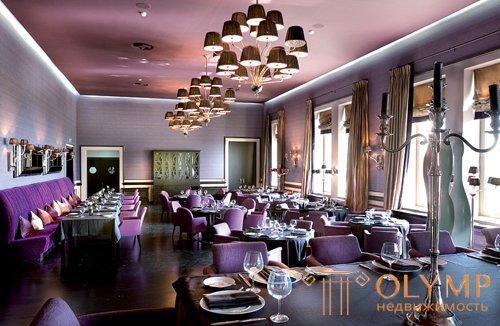
Neoclassicism is an aesthetic trend in art and architecture that prevailed in Europe at the end of the 18th and the beginning of the 19th centuries, and which had an appeal to the traditions of the art of antiquity, the art of the Renaissance or classicism.
Neoclassicism, as an aesthetic trend and architectural style, is determined by referring to antiquity, which was perceived by them from its previous classicism. In a word, neoclassicism is the modern for the time end of classicism.
Distinctive features of neoclassicism are elegance, lightness, and straightness. Neoclassicism is the antithesis of the modern style, which was too saturated with decorative elements.
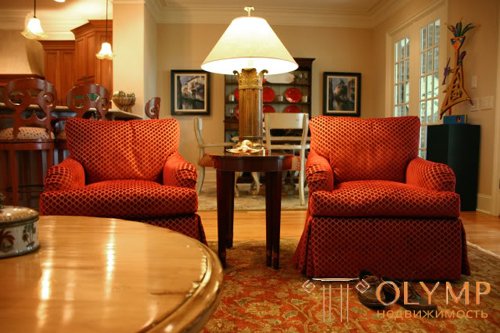
Neoclassical style in the interior, photo
The main features of the Neoclassicism style:
Neoclassicism - the direction of European art of the late 18th - early 19th century
It originated in the second half of the XVIII century. Came to replace the Rococo. Reliance on the severity of proportions, minimum decor, the pursuit of subtle colors. Had a continuation at the beginning of the XIX century in the Empire style, which arose for objective historical reasons, rejecting all the overly luxurious, unnecessary adornment, supporting fresh liberal trends and anticipating the creation of the new Napoleon Empire. It coincided in time with the campaign in Egypt and is characterized by a widespread introduction to the architecture and decor of Egyptian motifs.
The most prominent neoclassical architects in Britain were Robert Adam, John Nash and John Soun. Although their works resembled buildings built in Helsinki, St. Petersburg, Berlin, Paris and Rome, these masters became famous for their unusual and original approach. Robert Adam (1728–92) was one of the pioneers of neoclassicism in Great Britain who sought inspiration in the ancient architectural ensembles of Rome, Pompeii and Etruria. He was engaged in decoration and interior design, bringing them lightness and elegance. Adam paid attention to every detail of the interior, from the decoration of the ceiling, fireplaces, doors and even door handles to the color of the walls and the pattern of the carpets. He was not only an architect, but also one of the first interior designers.
One of the first architects of neoclassicism in France was Claude Nicola Ledoux (1736–1806), whose works, although created under the influence of antiquity, were modernist in their simplification of structure. A similar approach is seen in many of the buildings of neoclassicism, built in France after life in the country entered a quiet course after the revolution of 1789.
In Germany, the most famous architect of neoclassicism is Karl Friedrich Schinkel (1781-1851), an adviser to the Prussian king on architecture. Free from unnecessary decoration, its buildings, made in the Greek style, are a creative interpretation of classicism and functionally correspond to the tasks set before the architect. Two typical buildings of Schinkel in Berlin are the New Guard (1816) and the Old Museum (1823–30).
In France, in the framework of Neoclassicism, the style of Louis XVI, the regency, the directory and the empire style; in England - the style of Adam, Hepplewhite and Sheraton in the furniture business.
Although the neoclassicism style was created on the basis of classicism, it still has a number of differences from its predecessor. So, the distinctive features of neoclassicism are elegance, lightness, and straightness. It should also be noted that neoclassicism is the antithesis of the modern style, which was too saturated with decorative elements and looked luxurious, but a bit pretentious. The classic is a pillar of the new style, called neoclassicism. As well as neoclassicism was based on the ancient order system and it shows the strict observance of the oldest rule, according to which, it should be noted, the Egyptian pyramids were built, the golden section.
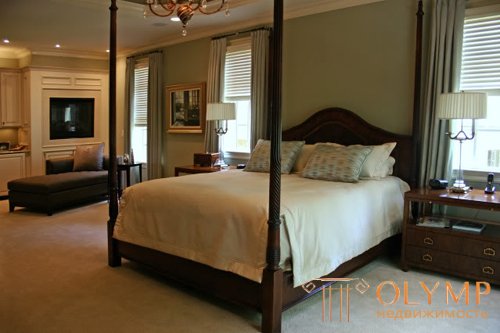
Neoclassical style in the interior, photo
It is inherent in him to appeal to antiquity, with its light, graceful straight lines. Characteristic decorations - leaves, shells, architectural gables.
Furniture in neoclassicism is light, elegant and with straight lines. For furniture, straight forms are very characteristic, slightly narrowed to the bottom of the legs. A distinctive feature of the furniture, made in the style of neoclassicism, is lightness, perfectly combined with delicate tones and creates a harmonious picture with all the decor of the room. It should be noted that when filling rooms made in the style of neoclassicism, only the most necessary of furniture is selected. Due to this, the feeling of bulkiness and massiveness is not created, but, on the contrary, the room is filled with lightness, refinement and an atmosphere of warmth and comfort. It should be noted that the apparent insufficiency of interior items is compensated by their high functionality. In addition, all interior items are easy to use. The most commonly used pieces of furniture in the neoclassic style are small coffee tables, armchairs, sofas, cupboards with glass and mirror stained glass windows. Perfectly fit into the interior design secretaries or bureau-cylinders. The furniture was made of precious wood of light colors, best of all - noble mahogany with porcelain inserts.
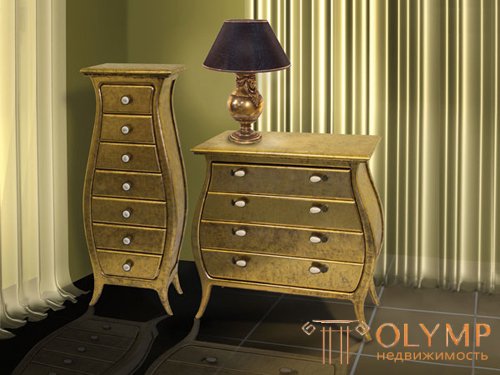
Neoclassical style in the interior, photo
Neoclassicism is solemnity and luxury, and through glass and mirror stained glass windows creates a visual sense of grandeur and expansion of the space of the room. The interior is almost always present huge arch-shaped mirrors, decorated with gilding in the form of flower garlands. High mirrors, starting almost from the floor, created the illusion of a labyrinth, considering also the fact that they reflected the refined decoration of the rooms. When filling the rooms, the masters of this style tried to move away from the massive, oversaturated decoration of interior items, trying to reflect all the same ancient forms, but more easily and naturally, sometimes simply in a two-dimensional form or in a weakly expressed (shallow) relief, which gave the interior a whole delicate, exquisite look.
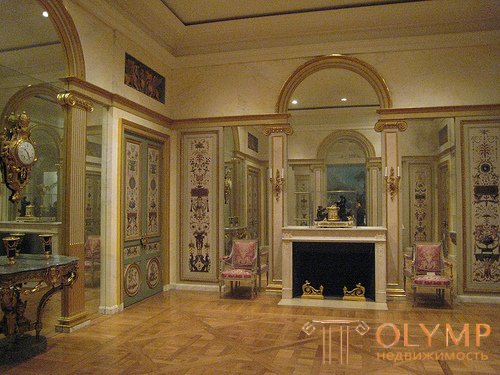
Neoclassical style in the interior, photo
The walls in neoclassicism were either painted in pastel colors or covered with wallpaper with a strict classical pattern. It is also interesting to use fabric for the decoration of the walls - finishing with drapery in the style of Roman and Greek clothes was in vogue. Mirror and glass stained glass windows create a visual expansion of space, luxurious and solemn.
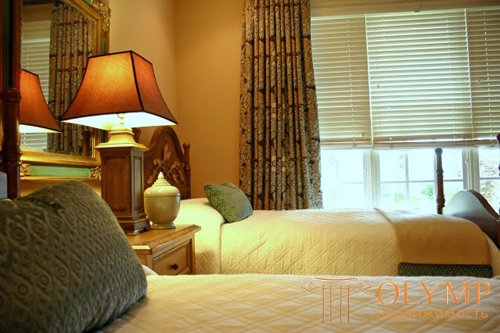
Neoclassical style in the interior, photo
The floor in the neoclassic style is parquet made of natural wood, creating an even greater feeling of warmth, coziness and comfort. As in the Empire style, parquet in the neoclassical style is not just some kind of flooring, but a real work of art. It uses rare woods. This is, above all, oak, rosewood, ebony, mahogany and many others. They were taken from afar. The carpet was allowed on the floor as decoration.

Neoclassical style in the interior, photo
Stucco molding serves as a high-ceiling decor, transporting visitors to this room a few centuries ago to the luxurious halls of palaces in which imperial receptions and balls were held.
The color palette of neoclassicism is dominated by light delicate shades: golden, blue, beige, brown. An elegant bronze finish is used to decorate corners, handles, and locks. Wood is widely used, preferably mahogany with porcelain inserts.
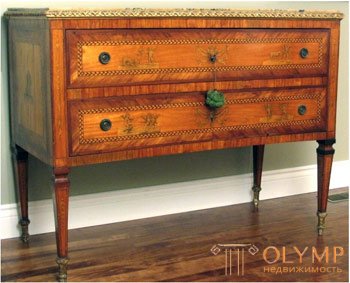
Neoclassical style in the interior, photo
In the design of neoclassic style curtains, the main detail is considered to be a semicircular pelmet draped in folds, combined with a jabot (two cut out on oblique pieces of fabric with beveled or stepped bottom edge). Curtains sew from heavy dense silk fabrics of a rectangular form. Eaves decorate with strict carving.
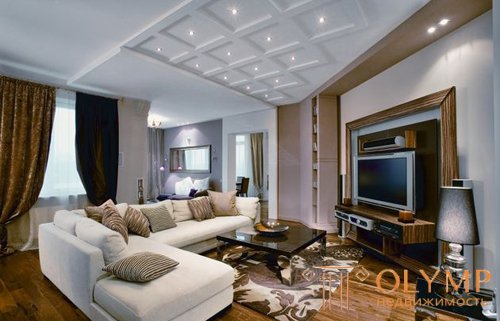
Neoclassical style in the interior, photo
Small bronze sculptures as decorations are also a sign of neoclassicism. Bronze items were often gilded, and their brilliance echoed the dull shine of gilded frames hung on the walls of the picture. Painting is preferable to ancient and other monumental scenes, such as battle scenes.
Since antiquity has discovered such material as marble for us, neo-classicism also welcomes this material in the interior. Of course, not in the form of marble columns, as in ancient Greek temples (although this is more likely a question of the available space), but, say, a marble sculpture. Absolutely luxurious option - the creation of a marble fireplace in the living room, decorated with gilded bronze figures or mantel clocks.
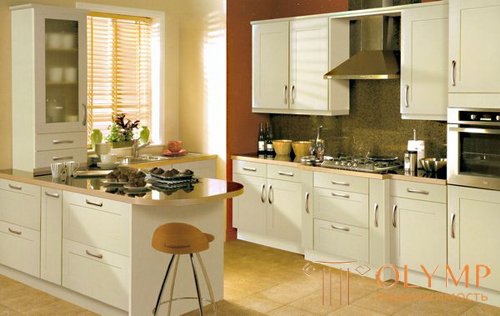
Neoclassical style in the interior, photo
And the completion of the entire interior in the neoclassic style are excellent floor lamps with magnificent lampshades. It should be noted that the lampshades are made of magnificent fabric of delicate pastel colors, thanks to which the room is filled with an atmosphere of warmth, comfort and noble luxury. Chandeliers for rooms in the style of neoclassicism are most often made of crystal. Such chandeliers create a feeling of solemnity and grandeur. And all the objects taken together is an excellent ensemble, filling the room with an atmosphere of warmth, comfort, noble luxury, excellence, magnificence and solemnity.
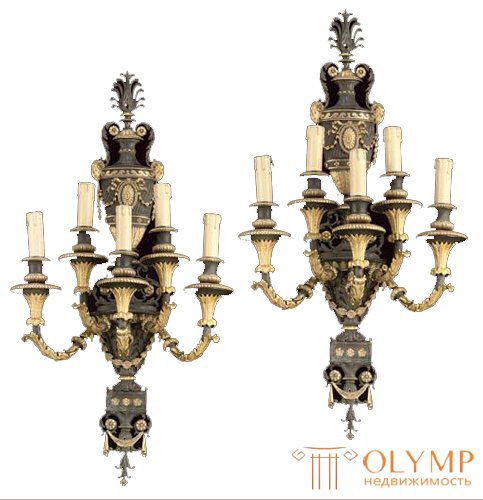
Neoclassical style in the interior, photo
In the interior in neoclassic style, all classical proportions are observed - the furniture is located along the walls, the center of the room is occupied by a perceptible detail, be it a coffee table or a wooden stand for flowers. Any plants are successfully combined with the interior design.

Neoclassical style in the interior, photo
In the ornamentalism of neoclassicism, the curl again becomes powerful and developed. The inherent baroque and rococo ridge disappears, but various sculptural forms are actively used - acanthus leaves, palmettes, laurel wreaths, various cast rosettes and reliefs. The curl is quite actively involved in the composition of the pattern, but the intricacy of the compounds inherent in the Renaissance, Baroque and Rococo is absent. The curl sometimes becomes rectangular - in tune with the meander, and sometimes the meander becomes rounded, consisting of a number of curls - in tune with other curls of the composition. The drawing of neoclassicism is distinguished by its clarity and relative simplicity of geometry, the presence of a good amplitude of the thickness of the elements, that is, a combination of active thick and elegant fine lines, the inclusion of a large number of relief sculptural forms in the composition. Military attributes almost never occur. Gradually, the trend of development of simplicity of the pattern and clarity of geometric lines leads to the appearance of the Empire style.
Neoclassicism - a nostalgic look in the direction of classical, ancient forms in architecture and design - which became popular in the 20th century architectural style, which does not lose its relevance in the 21st century. Neoclassicism conveniently lays down on traditional apartments in the “old stock” or new, modern apartments and houses, with high ceilings, rooms of impressive size and often wide staircases. Interiors in the neoclassical style fit perfectly into such a space with their desire to emphasize the virtues of classical, ancient architecture - clean lines, symmetry, simple forms, restrained geometry, noble, but not excessive decor. At the same time, neoclassicism is the desire to use modern elements and furnishings, a departure from the dusty conservatism of classicism.
Neoclassicism in architecture and design is close to lovers of minimalism and bright spaces.
Что бы оставить комментарий войдите
Комментарии (0)